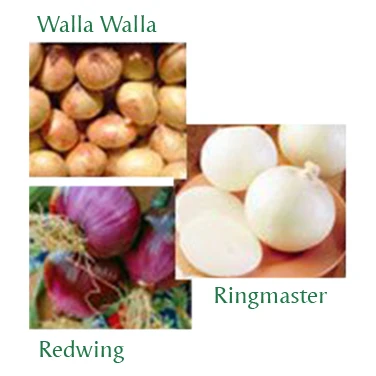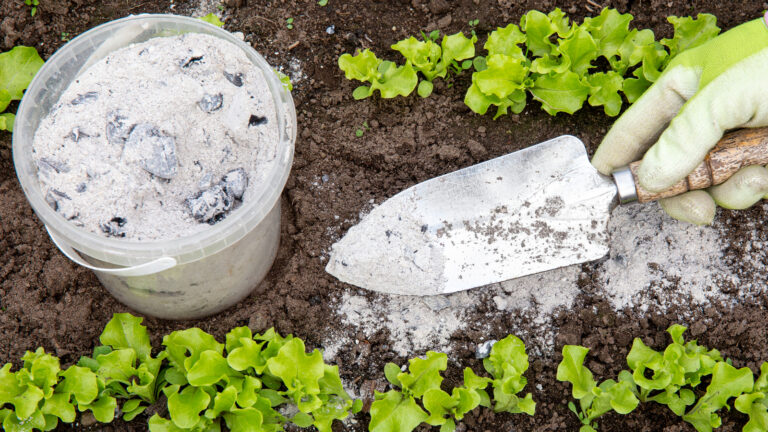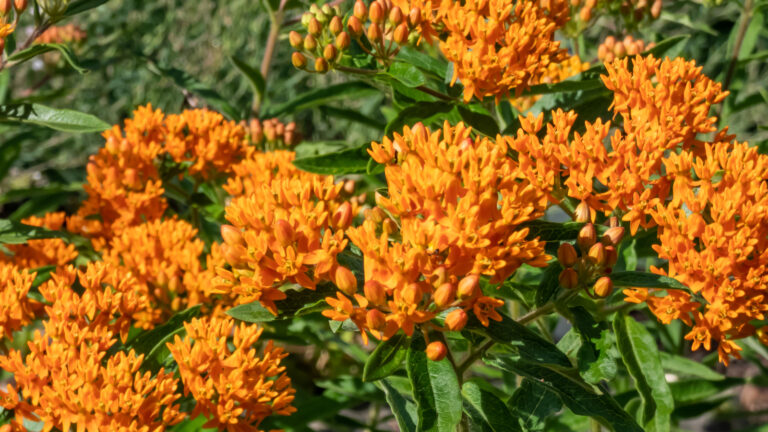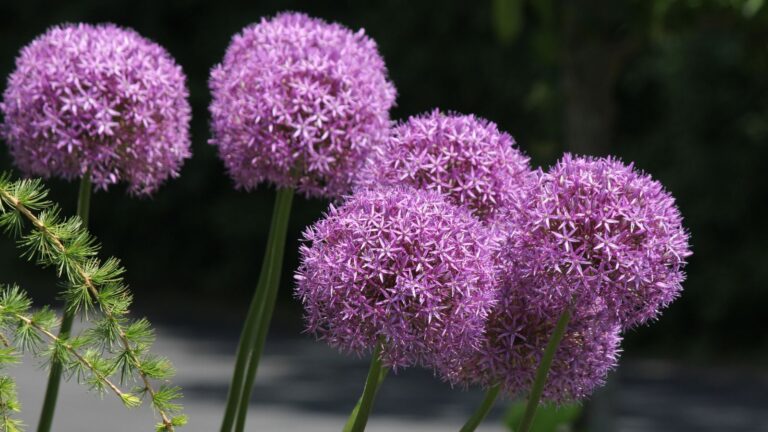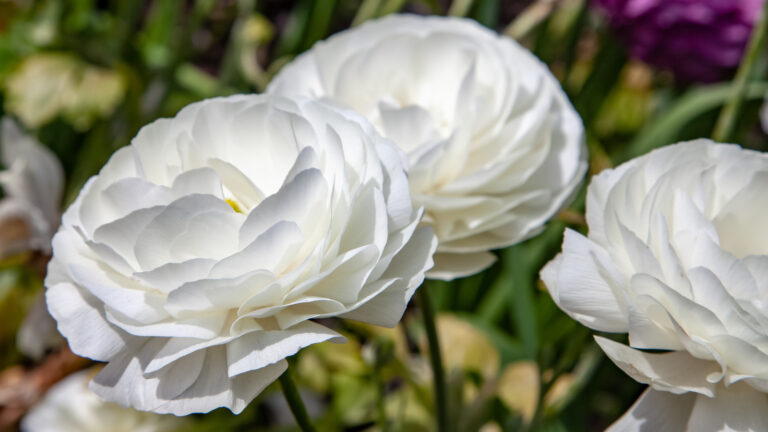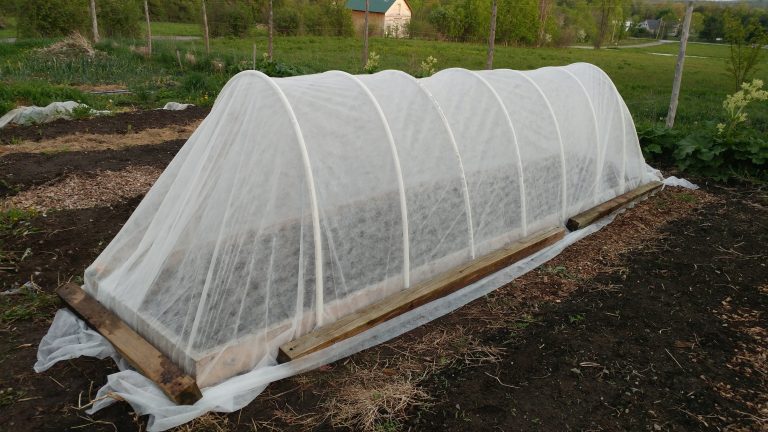This post may contain affiliate links.
Growing onions in your vegetable garden can sometimes be tricky. But with a few hints and a bit of practice, you can learn how to grow onions and successfully harvest and store almost a year’s worth of these flavorful bulbs!
Onions can be grown from seed, from transplants (little seedlings that you transfer into your garden), or from “sets” (small onion bulbs ready to do their final bit of growing in your garden). Choosing which option you want to grow depends on how much space, determination, and experience you have. Below we discuss the pros and cons of each method, plus how to grow onions each way.
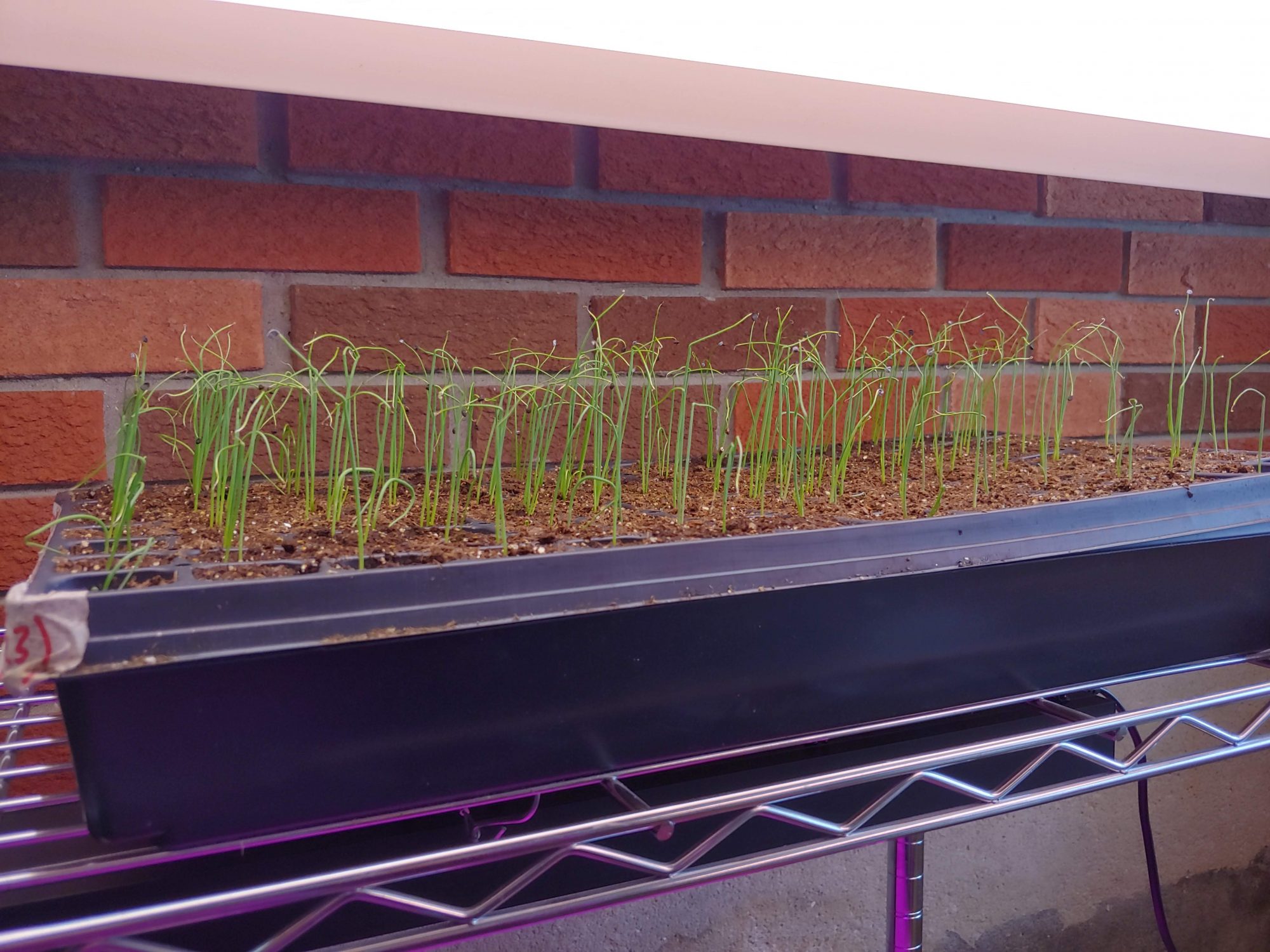
How to grow onions from seed
The most “from scratch” way to grow onions is to buy a packet of seeds and grow them from the very beginning. Onion seed packets are available in wide variety so this method gives you the most selection and choice. Because onions have a long season, they need to be planted among the first of your seeds – about 8-10 weeks before your average date of last frost. Plant them in a good seed starting mix with a direct source of light and a heat mat under the pots. As your onions grow taller, move the light source a little further up to encourage growth. You should not need to separate them until they go into the ground, but if they start to overcrowd their pot they can be spread out to allow more space.
We have had decent luck with growing onions from seed, but the rate of success from germination to transplanting is lower than some of our other vegetables. I believe this is because they spend so long indoors; we just can’t always keep them healthy. This has led us to explore other options, such as the transplanting and “set” options below.
If you live in a climate where your winters are not as harsh, you can actually plant onion seeds in the fall. They will overwinter in the soil and get an early start the next spring. Here in northern New England we have experimented with planting onion seeds in our beds that have row covers and have actually had some success with early harvests!
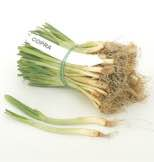
How to grow onions from transplants (or seedlings)
Growing onions from transplants simply means that you are letting someone else start the seeds for you. Onion seedlings can be purchased from many gardening center as well as online (Renees Garden has a nice selection of single and mixed varieties). They’re typically about 6-8″ tall and look like large circular blades of grass. When you order transplants shipped by mail they will come in a bunch that will seem dried out. You simply story this bunch of plants in a cool, dry area and try to plant them within a week. You may also find onion seedlings in soil at your local garden center. In this case, you simply transplant them into your garden.
Onion transplants can be planted into your garden about 4 weeks before the date of last frost. Plant onions in a location where they will get full sunlight and good drainage. Follow package or seller instructions – normally onions should be planted about 4 inches apart in rows that are about 12-18″ apart. If you want to harvest onions smaller, you can plant them as close as 2″ from each other.
We have had great luck with onion transplants as the success rate seems to be higher than with seeds. We love Renees Garden’s mixes, which are specific to your region and offer a few unique varieties. This year, we ordered the Rainbow 0nion Sampler for Northern Climates which includes three varieties – Walla Walla, Redwing, and Ringmaster. If you are just learning how to grow onions and want to be able to choose from a number of options, tranplants would be our highest recommendation.
How to grow onions from sets
Onion sets are onions that have already had one season of growth. When planted, they will enter their second season and come to full size in your garden. They basically look like small onion bulbs that are dried out and somewhat flaky. The best sets should be about the size of a marble; if they are larger than that, they tend to bolt early (set flowers above ground) and the bulb beneath the ground will not get as large.
Onion sets are planted much like transplants, but won’t show the green part above ground until they start to grow. Plant them about 4″ apart, about 1-2″ deep, in rows that are 12-18″ between.
Onion sets help to guarantee an onion harvest because you are getting a head start on the size and scale of your plant. However, the downside is that your choices will be limited. There will not be as many onion varieties available to you as sets and you may have to simply choose between “yellow, white, or red” varieties. For this reason, we sometimes use sets when we are looking for a large quantity of storage onions and don’t care too much about their unique flavor.
Planting & Caring for Onions
When planting your onions, be sure that you are starting with high-quality soil. Amend your soil with compost and a high-quality organic fertilizer at planting time to give your onions the best shot at growth. Onions love a high nitrogen fertilizer like blood meal, bat guano, composted chicken manure, or cotton seed meal.
Once your onions are in your garden and growing, you’ll care for them much like other vegetables. Make sure they have plenty of water and sunshine, and keep them free from invasive weeds. You can side dress with additional fertilizer every few weeks – until the bulbs start to push up from the soil (stop fertilizing when the soil cracks from their emergence). This is also the time when regular watering is essential as it will help the bulb reach its full potential.
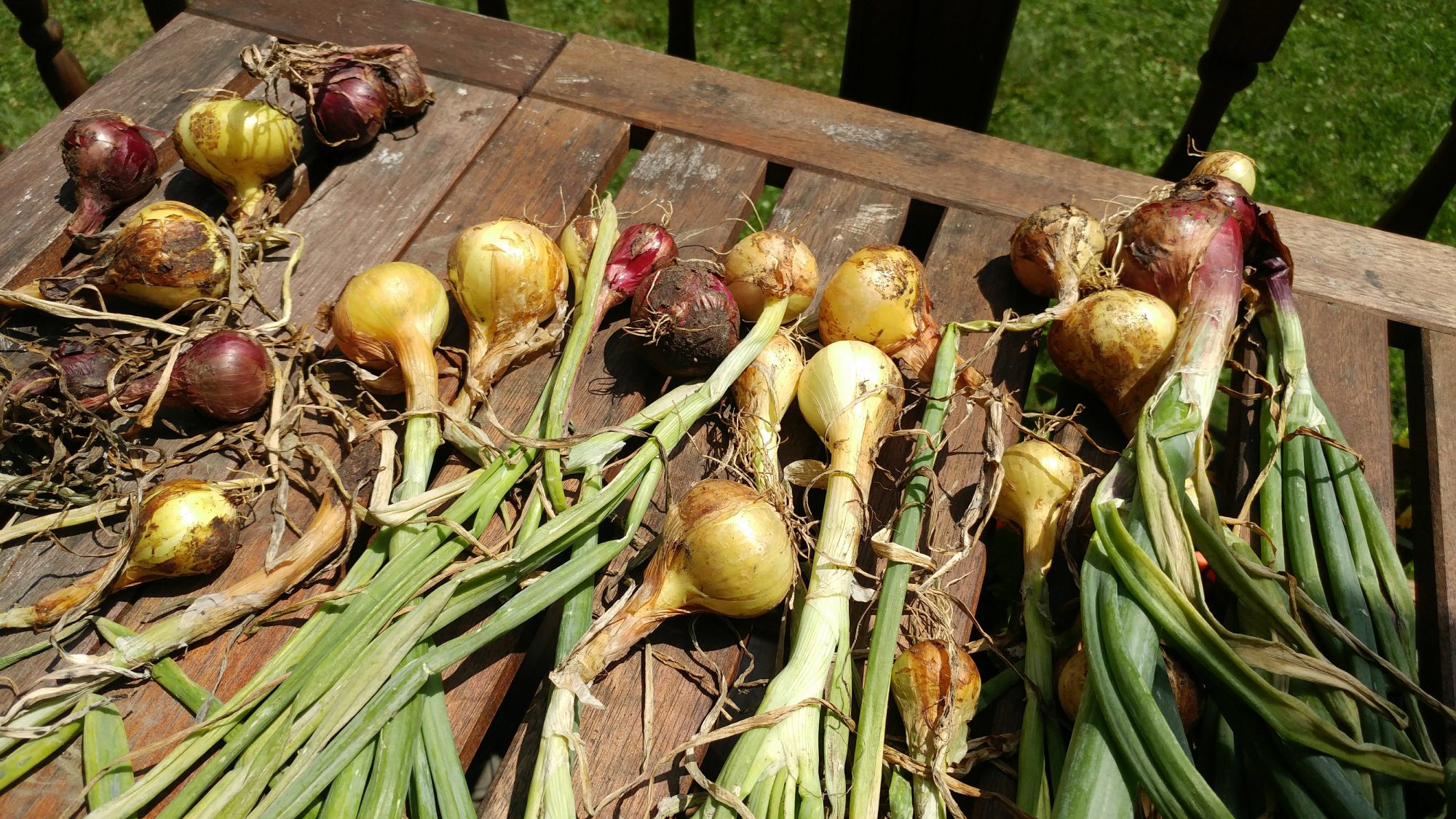
Harvesting & Storing Onions
Onions are ready to harvest when the top of the plant turns yellow or brown and starts to fall over. This means that they have reached their full potential for long-lasting storage. That said, you can actually harvest an onion as soon as you see the bulb if you plan to use it right away, but do this sparingly as those bulbs will be smaller and won’t last as long. The best time to harvest onions is in the morning on a sunny day when the soil is still slightly moist and will release them readily. Then, lay your onions out in the sun to dry for about 2 days.
Once the onions are thoroughly dry, you can cut off the tops and store them in a cool, dark place for up to a few months. The process of harvesting and curing onions is similar to that of drying and curing garlic, and care must be taken to ensure that onions are thoroughly dry before storing. The entire neck, down to where it meets the bulb, should be dry before cutting and storing.
[mailerlite_form form_id=1]
Carrie Williams Howe is an educational leader by day and an aspiring homesteader by night and weekend. She lives on a small homestead in Vermont with her husband, two children, and a rambunctious border collie. She blogs about her family's homestead life at The Happy Hive.

